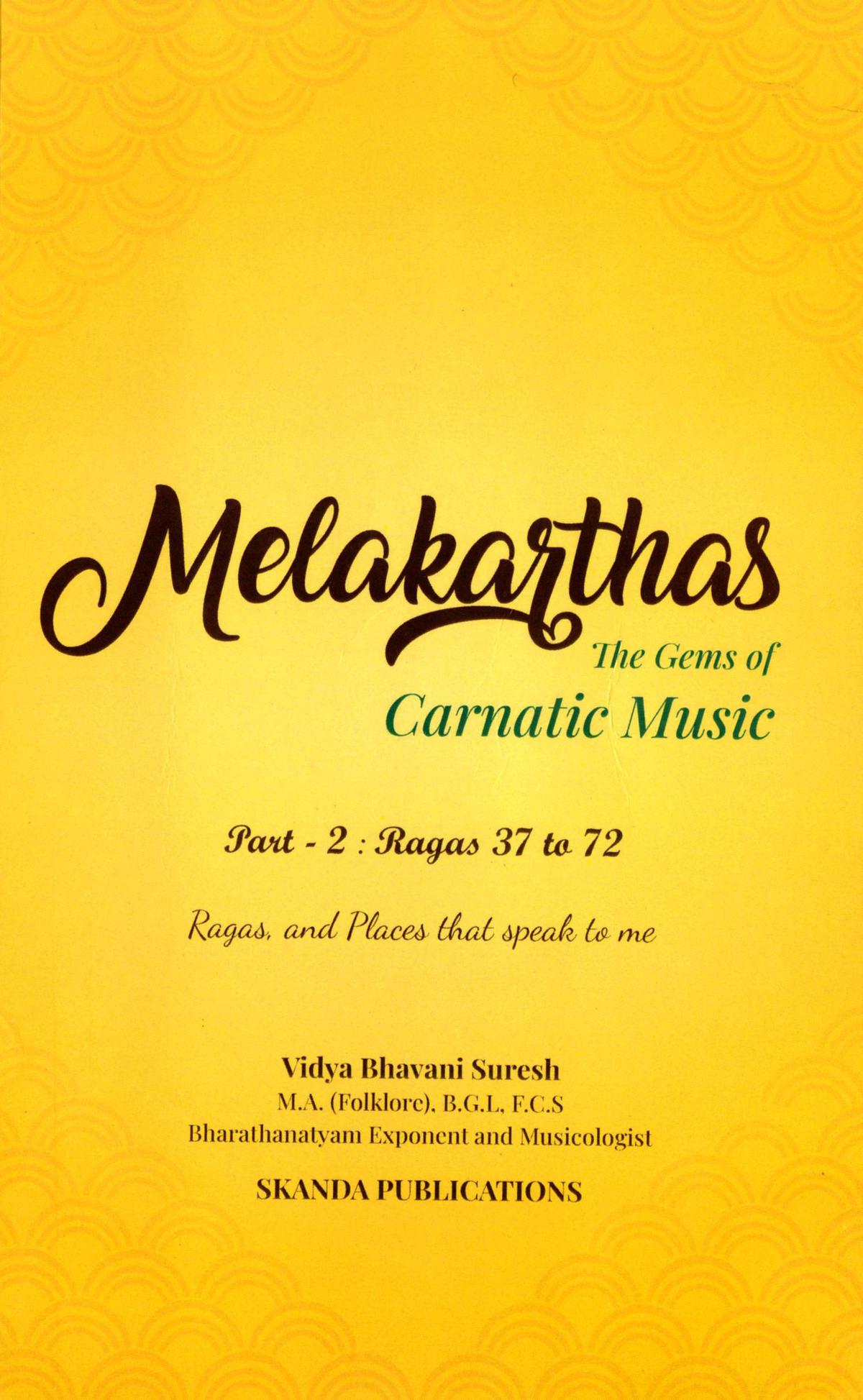An Image of the Musical Trinity | Photo Credit: The Hindu Archives
In the 72 Melakarta scheme, the Pratidhamyama section contains some famous ragas including Kalyani and Shanmukhpriya, which are prominent in concerts. But what makes them a favorite of artists?
It is said that Pratidamadhyam ragas can be easily identified simply by singing the raga scale, unlike the Shuddhamadhyam ragas, in which Gamak and accompaniment play an important role.
Vidya Bhavani Suresh has decoded these aspects in her book Melakarthas – Gems of Carnatic Music Part 2, a sequel to his first volume on pure Madhyamam ragas. This second part is an analysis of the 36 ragas (pratimadhyamam) in terms of their ascension, descent and the specific swaras that establish the character of each raga.

book by vidya bhavani suresh Melakarthas – Gems of Carnatic Music Part 2
, Photo credit: The Hindu
The book with the yellow cover has a caption that reads: ‘The chords and places that speak to me’. Small stories and anecdotes have been included in it to make it interesting for the readers. The grouping of ragas by cycles at the beginning of each section helps readers to know what the subsequent chapters are about.
Apart from familiar ragas like Simhendra Madhyam, Vachaspati and Subhapanthuvarali, some unfamiliar ragas like Salagam, Divyamani, Syamalangi, Neetimati and Sucharita have also been included.
Vidya describes in detail the characteristics of rare ragas. For example, in Salagam she explains about swarasthanas and explains how to correct the notes of MPDN to not sound like Shanmukhpriya.
Similarly, she also explains how Shuddha Dhaivatam and Kakali Nishadam in Subhapanthuvarali add to its charm. To understand the beauty of the raga one must listen to GNB’s ‘Nee Samnamevaru’ in this raga, 45th in the Melakarta chart and 3rd in the Vasu Chakra.
Vidya cites popular works and film songs for better understanding of each raga.
While the author’s efforts to present a complex subject with a touch of innovation are commendable, the long introduction before the chapters could have been avoided.